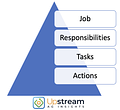Welcome to the 94th edition of Upstream Ag Insights!
Index for the week:
3rd Quarter Agribusiness Results Summary
Microsoft and Bayer Crop Science Platform Partnership
Farmers Business Network Raises $300m + ADM Partnership Announcement
GROWMARK and CHS VC Partnership
Autonomy as an Evolution
Building an AgTech VC Firm - What did we learn?
Thanks for reading an…

